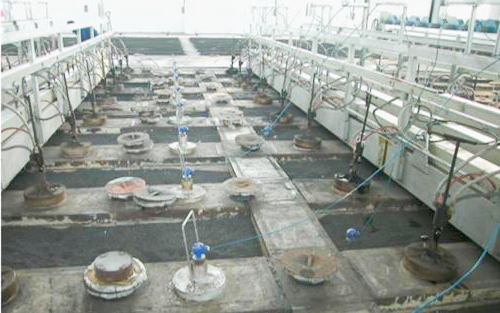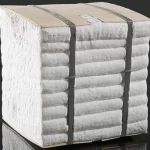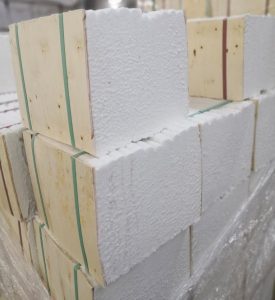Why is Lightweight Ceramic Fiber Module Used for Carbonization Furnace?
Table of Contents
The carbonization furnace can reach a calcination temperature of up to 1250°C, and the calcination cycle typically requires 320-420 hours. The insulation of the furnace cover is particularly important. The original structure, which is constructed with refractory bricks, has many hidden dangers during use.
1. Hazards of the original structure of carbonization furnace
1)In the production process of the carbonization furnace, the opening and closing of the lid are frequent. However, the clay bricks are not resistant to rapid heating and cooling, leading to severe cracking, which allows flames to damage the steel structure. This results in a short lifespan and significant heat loss.
2)The total weight of the refractory brick-built furnace cover exceeds 20 tons, requiring a specialized 30-ton overhead crane to lift it. In order to reduce fuel consumption, extend the lifespan of the furnace cover, and minimize heat loss, lightweight ceramic fiber module covers have gained widespread popularity.

2. Structure of ceramic fiber insulation for carbonization furnace:
The lightweight ceramic fiber module cover consists of an outer steel shell, lined with 30mm thick zirconium-containing ceramic fiber blanket and 180mm thick ceramic fiber modules, fixed with heat-resistant 310 steel.

Advantages of using lightweight ceramic fiber modules after improvement


